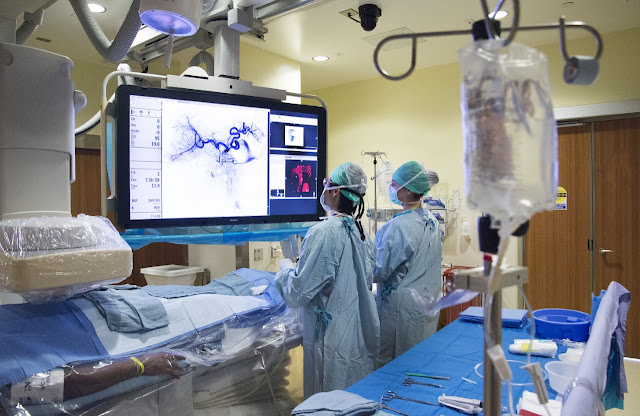Interventional Radiology Market Estimated To Reach US$ Mn By 2023
 |
| Interventional Radiology Market |
Market Overview:
Interventional radiology involves the use of image-guided techniques to perform minimally invasive procedures, offering several advantages over traditional surgical methods. These procedures provide precise and targeted treatment, resulting in reduced post-operative complications, shorter hospital stays, and quicker recovery times. The increasing prevalence of chronic diseases and advancements in imaging technology are driving the demand for interventional radiology procedures globally.
Market Key Trends:
One key trend in the interventional radiology market is the rising adoption of minimally invasive procedures. Minimally invasive techniques allow for smaller incisions, reducing scarring, pain, and recovery time for patients. These procedures also offer a shorter hospital stay, resulting in cost savings for healthcare providers. This trend is driven by the growing preference of patients for less invasive treatment options and advancements in medical device technology. Furthermore, the increasing geriatric population globally, coupled with the rising incidence of chronic diseases, is fueling the demand for minimally invasive procedures in interventional radiology.
The global Interventional Radiology Market Share is estimated to be valued at US$ 22,849.9 Million in 2023 and is expected to exhibit a CAGR of 6.5% over the forecast period of 2023-2030, according to a new report published by Coherent Market Insights.
Segment Analysis:
The interventional radiology market can be segmented based on product, application, and end user. In terms of product, the market can be divided into angiography systems, fluoroscopy systems, computed tomography (CT) scanners, magnetic resonance imaging (MRI) systems, ultrasound systems, and others. Angiography systems dominate the market due to their wide application in diagnosing and treating various diseases, such as cardiovascular and neurovascular disorders. These systems offer high-quality imaging, real-time visualization, and minimal invasiveness, making them the preferred choice for interventional radiologists.
By application, the market can be categorized into cardiology, oncology, urology & nephrology, gastroenterology, neurology, and others. Among these, cardiology holds the largest market share due to the increasing prevalence of cardiovascular diseases worldwide. Interventional radiology techniques, such as angioplasty and stenting, are widely used to treat coronary artery disease, peripheral arterial disease, and other cardiac conditions.
In terms of end user, the market can be segmented into hospitals, ambulatory surgical centers, and others. Hospitals account for the largest share of the interventional radiology market, as they are equipped with advanced imaging systems and have a higher patient footfall.
Key Takeaways:
The global interventional radiology market is expected to witness high growth, exhibiting a CAGR of 6.5% over the forecast period (2023-2030). The market is primarily driven by the increasing prevalence of chronic diseases, the growing geriatric population, and advancements in imaging technologies. For instance, the rising incidence of cardiovascular diseases and the need for minimally invasive treatment options are boosting the demand for angiography systems. Additionally, favorable reimbursement policies and increasing investments in healthcare infrastructure further propel market growth.
In terms of regional analysis, North America is the fastest-growing and dominating region in the interventional radiology market. This can be attributed to the presence of well-established healthcare infrastructure, high healthcare expenditure, favorable reimbursement policies, and the adoption of advanced medical technologies. Furthermore, the Asia Pacific region is expected to witness significant growth during the forecast period, owing to the rising healthcare expenditure, increasing awareness about interventional radiology procedures, and the growing prevalence of chronic diseases.
Key players operating in the interventional radiology market include Siemens Healthineers AG, Shimadzu Corporation, Koninklijke Philips, Hologic, Inc., Fujifilm holdings corporation, Esaote SPA, Carestream Health, Samsung Medison (Samsung Electronics Co. Ltd), and Canon Inc. (Canon Medical Systems Corporation), among others. These players are focusing on strategic collaborations, product launches, and mergers & acquisitions to strengthen their market presence and expand their product portfolios.



Comments
Post a Comment